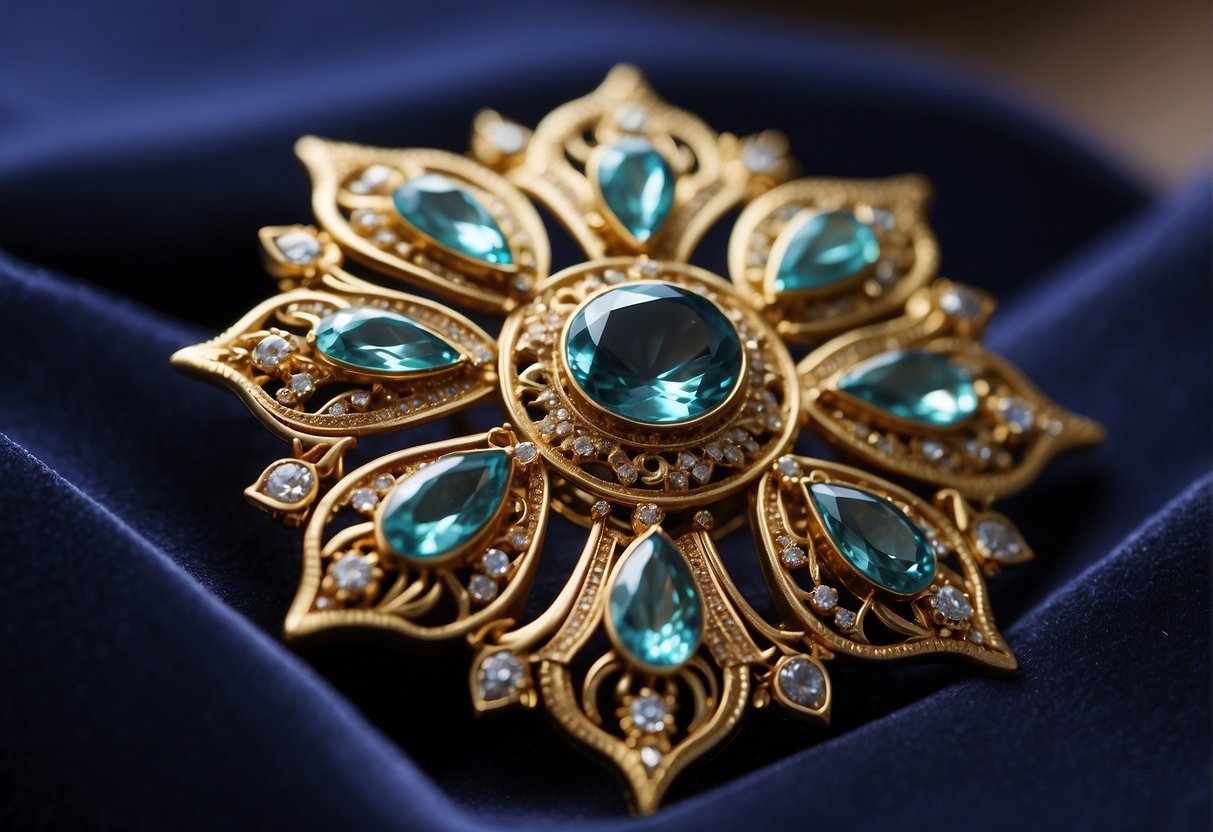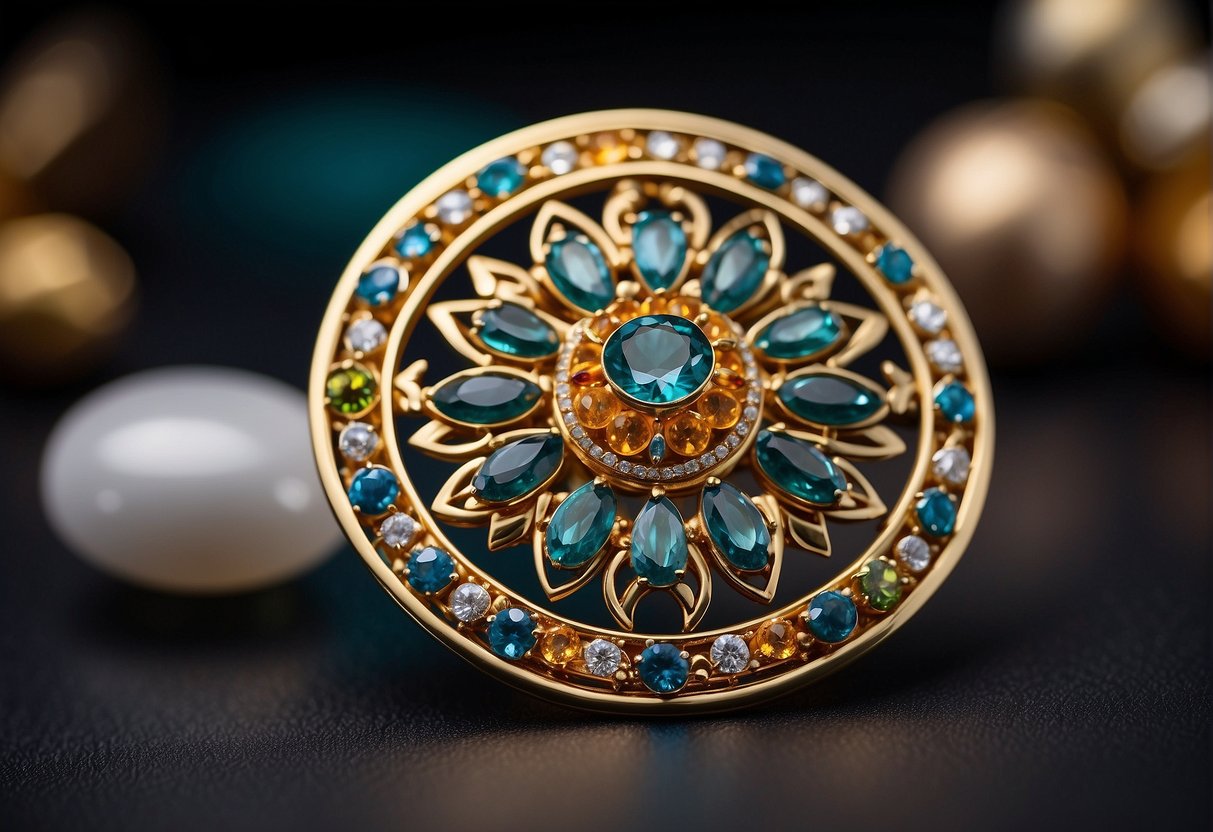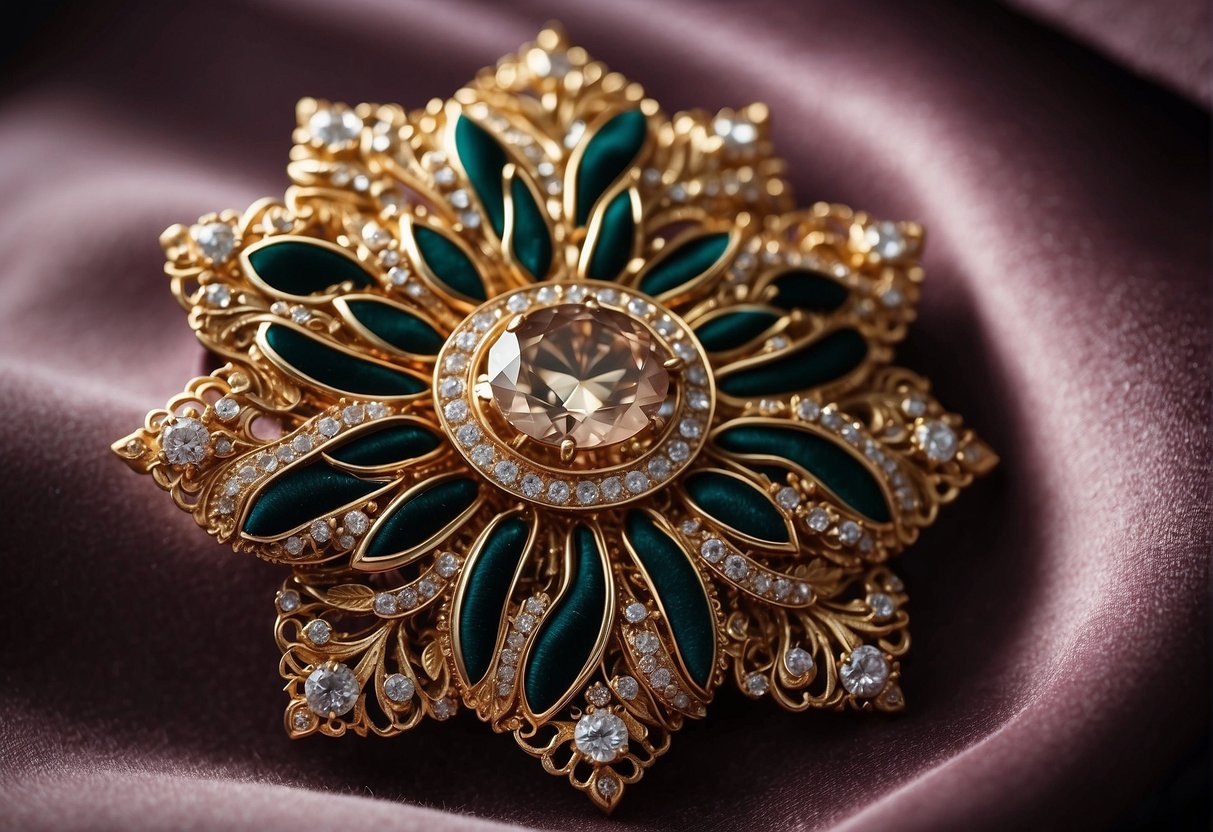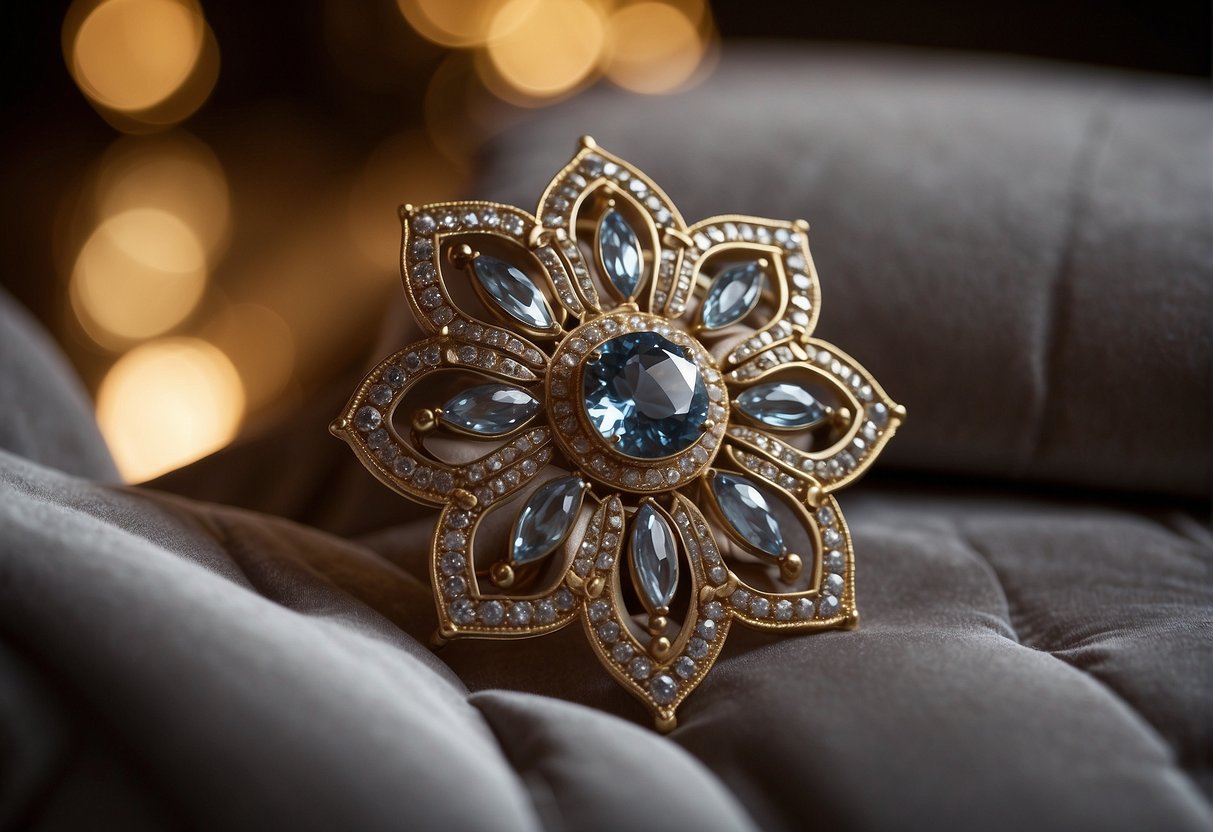What is a Brooch: Unveiling the Charm of Timeless Jewellery Pieces
A brooch is a versatile piece of jewellery that serves both a functional and a decorative purpose. Typically, it's a pin you can attach to your clothing, often on the lapel of a jacket, the strap of a dress, or even to secure a scarf in place. Brooches have been a part of fashion for thousands of years, with their origins tracing back to ancient times. They started as simple utilitarian devices for fastening clothing but evolved into intricate works of art, capturing the aesthetic and cultural values of various periods and societies.

From ancient Celtic designs to contemporary fashion statements, brooches remain a staple in jewellery collections. They come in countless styles, from the classic cameo to modern artistic pieces, and are made with a variety of materials such as gold, silver, and precious stones. Historically, brooches were not only markers of style but also showed social status or were used to signify some form of allegiance. Today, you can still find brooches that carry that heritage, featuring family crests or symbols for different organisations.
When you choose a brooch, consider the event and outfit you aim to pair it with. A simple silver pin could add elegance to your work blazer, while a bold, colourful piece might be the talking point at a social gathering. With their enduring appeal and the ability to elevate the plainest of attire, brooches offer a special way to express your personal style. Remember, the placement of the brooch can change the entire aesthetic of your ensemble, so don’t be afraid to experiment with different positions to find what suits you best.
History and Evolution

When you explore the history of brooches, you uncover a remarkable evolution from practical garment fasteners to intricate pieces of jewellery. Let's take a closer look at this transition through the ages.
Bronze Age Beginnings
Brooches, initially known as fibulae, surfaced during the Bronze Age as functional items designed for fastening garments. The Celts, known for their metalwork, crafted these items, which commonly featured a pin and a catchplate. Early styles such as the annular brooch were prevalent, especially in regions like early medieval Ireland.
Medieval Significance
During the medieval period, brooches evolved beyond their practical use to become symbols of wealth and status. Ireland's Tara brooch from the 7th century is an exquisite example, teeming with intricate Celtic designs and insular art. Penannular brooches, featuring a unique open section in the design, became widely used to fasten cloaks and were often elaborately decorated.
Victorian Sentiments
The Victorian era ushered in a sentimental phase for brooches, where they served as tokens of mourning and remembrance. Mourning brooches often contained keepsakes such as locks of human hair from a deceased loved one. These pieces conveyed the depth of grief and love, and were typically crafted with solemn and reflective designs.
Design and Craftsmanship

Your appreciation of brooches will deepen when you understand the sophistication entwined with their design and craftsmanship. These ornaments are not merely decorative; they often exhibit exceptional artistry and expertise in metalwork.
Materials and Gemstones
Brooches are built from a variety of precious metals, including gold and silver. Craftsmen choose these metals for their durability and the elegant backdrop they provide for gemstones. You'll notice that high-end brooches often flaunt an array of dazzling gemstones such as diamonds and pearls. Beyond these, enamel is also applied to inject colour and artistry into the piece.
- Gold: esteemed for its lustrous finish and malleability, making it ideal for intricate designs
- Silver: prized for its reflective quality and more accessible price point
- Diamonds: represent the pinnacle of luxury, commonly used in brooches for their unrivalled brilliance
- Pearls: add a touch of elegance and are often used in brooches inspired by nature
Innovative Forms
The artistry of brooch design shines in innovative forms where imagination takes physical shape. You might encounter brooches crafted to mimic natural wonders like flowers, animals, and insects, each exhibiting a unique flair and style.
- Flower: Brooches in floral designs might capture the delicate aesthetic of an orchid with a medley of sapphires, emeralds, and amethysts.
- Animal: Expect to see the animal kingdom represented in stylised or realistic forms, such as a brooch in the shape of a graceful swan.
- Insect: The miniature world of insects is also a popular muse, with brooches featuring bees or butterflies adorned in vibrant enamels and sparkling stones.
As you familiarise yourself with brooch styles, remember that each piece is a testament to meticulous craftsmanship and creative design, a wearable work of art manifesting centuries-old traditions of jewelry making.
Types and Functions

Brooches, a versatile accessory ranging from vintage to modern designs, have evolved in function and form. They're not just ornamental but serve various practical roles and hold symbolic significance.
Decorative Varieties
Vintage Brooches: You'll find that vintage brooches often showcase intricate designs embodying the art and culture of their time. For instance, an Italian Neoclassical brooch may feature scenes inspired by ancient Rome or Greece, crafted in precious metals and adorned with gemstones.
Modern Brooches: Contemporary brooch types embrace simplicity and innovation. Designers now integrate materials like plastics, ceramics, and even textiles, expanding the spectrum of visual appeal. Modern brooches might double as pendants, exemplifying their adaptability in today’s fashion.
Practical Applications
Pin and Clasp: The core function of any brooch is to fasten materials. The pin and clasp mechanism is fundamental, be it a simple French ring brooch or a more complex Germanic design which could have secured the heavy cloaks of the European nomads.
Lapel and Ribbon: Brooches are often seen on lapels, serving as both a fastener and a symbol of allegiance or remembrance. A ribbon brooch might hold a ceremonial significance, turning a simple cloth strip into a statement of honour.
Symbolism and Representation
You wear brooches not just to secure your clothes or enhance your outfit, but also to express personal values or affiliations. A brooch on your lapel might signify solidarity with a cause, or sporting a family heirloom brooch could represent a connection to your heritage.
Fashion and Styling

Brooches serve as a versatile accessory that can elevate your attire, lending a touch of elegance or a bold fashion statement to a variety of ensembles.
Elegant Pairings
For a refined look, you can fasten a brooch to the lapel of your blazer or jacket, instantly enhancing the garment's sophistication. Select a brooch that complements the material of the clothing, such as a delicate lace brooch for a silk blouse or a sterling silver piece against a dark woollen dress. Consider the scale and design of the brooch to ensure it harmonises with the fabric and pattern of your outfit.
Accessorising Accessories
Brooches aren't restricted to just your clothing. Attach a brooch to a hat or bag to update and personalise your accessories. You can also transform a brooch into a hair ornament to give your hairstyle an opulent touch. Get creative by using a brooch to cinch the waist of a dress or drape it elegantly across your shoulder by securing it to a chain or necklace. For a modern twist, cluster several brooches together on a cuff for an eclectic and fashionable arm accessory.
Frequently Asked Questions
In this section, you'll find answers to common queries about brooches, including their style, use, and maintenance.
How do you wear a brooch?
You should typically wear a brooch on the left side of your blouse or business jacket, aligning with the 'left rule' in professional settings. This optimises visibility when shaking hands. However, you may also creatively attach it to scarves or hats, or use it to gather fabric on a dress for added style.
Are brooches in style for both men and women?
Yes, brooches are fashionable accessories for both men and women. While traditionally more common for women, men are increasingly embracing brooches as lapel pins on jackets for a touch of sophistication.
Can you explain the difference between a brooch and a pin?
A brooch is typically a more ornamental and larger item worn for decorative purposes, often featuring intricate designs and precious materials. A pin is a broader term that usually refers to a simpler, smaller fastening device, including brooches as a subcategory.
What occasions are appropriate for wearing a brooch?
Brooches are versatile pieces suitable for various occasions. They can add elegance to formal outfits at events like weddings or dinners and also lend a professional touch to business attire. For a casual look, brooches can serve as a playful embellishment on daywear.
What various types of brooches are there?
Varieties of brooches include cameo, lapel, and bar brooches, each offering unique stylistic choices. Cameo brooches often feature a raised profile of a person, while lapel brooches are mainly worn by men. Bar brooches come with a simple straight design and can be adorned with jewels or motifs.
How do you care for and maintain brooches?
To maintain your brooches, gently clean them with a soft cloth to remove any dust or grime. Avoid using harsh chemicals that might damage delicate materials. It's advisable to store them in a jewellery box or pouch to prevent scratches and preserve their lustre.

